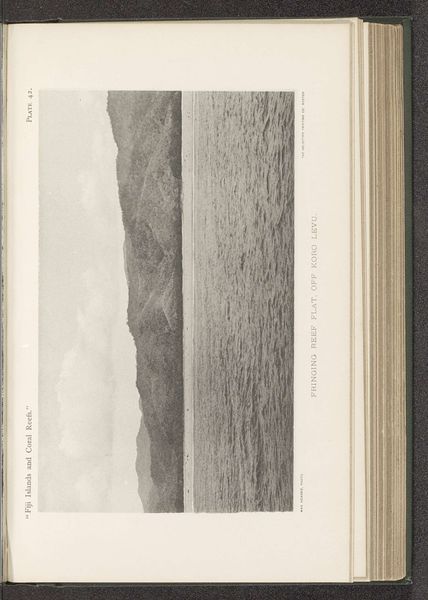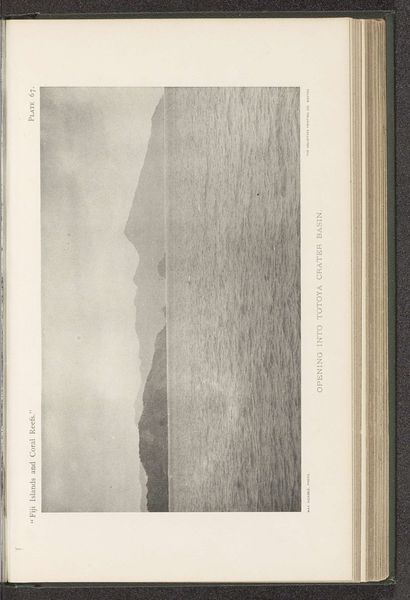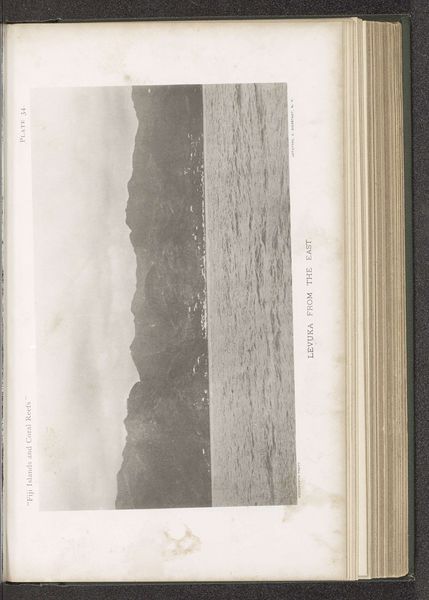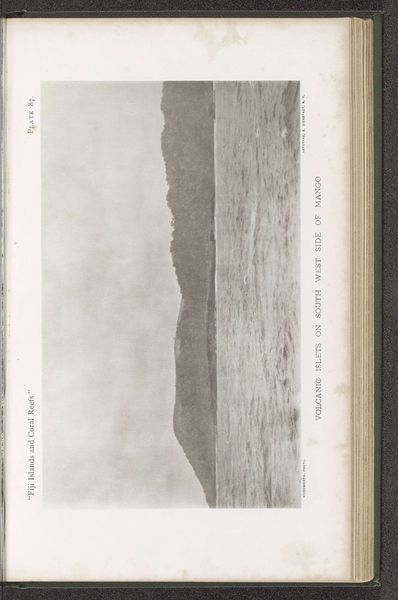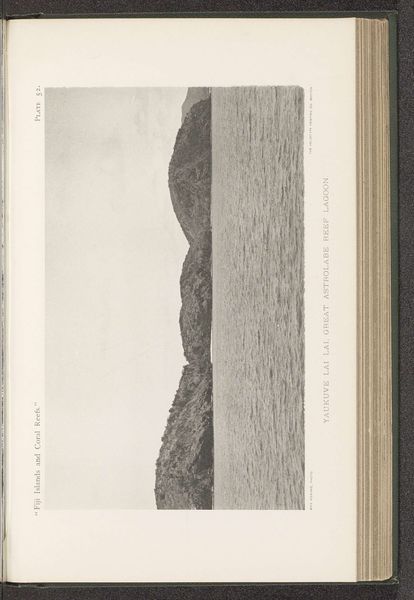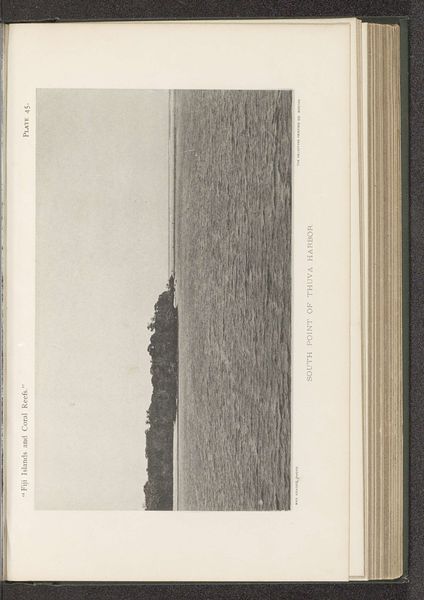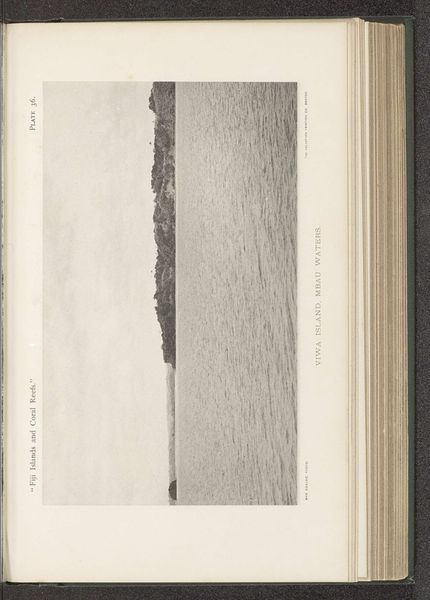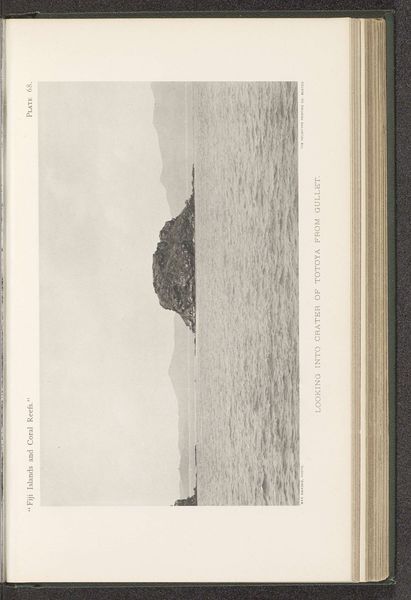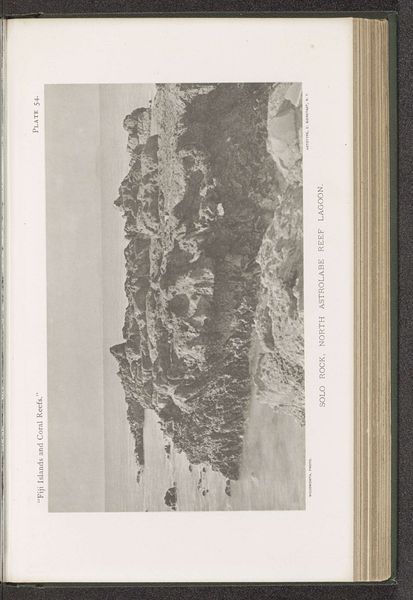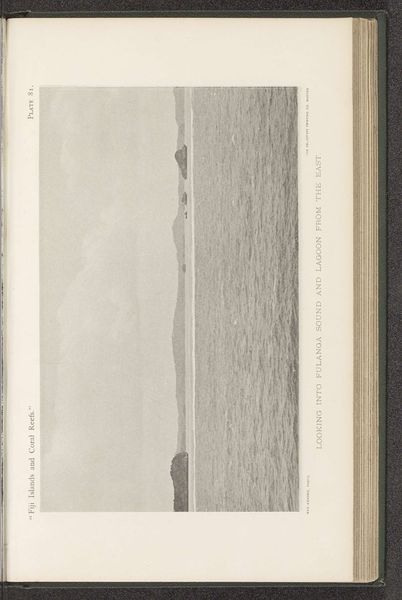
photography, gelatin-silver-print
#
pictorialism
#
landscape
#
photography
#
orientalism
#
gelatin-silver-print
#
realism
Dimensions: height 108 mm, width 179 mm
Copyright: Rijks Museum: Open Domain
Editor: Here we have a gelatin silver print from before 1899 by Maximilian Agassiz, titled "Gezicht op Ono met ervoor het Great Astrolabe Reef." It has a calm, almost muted feel. What strikes me most is how the textured surface of the water mirrors the mountainside. How do you see this piece? Curator: For me, this image speaks to the technologies of representation and their embedded politics. Consider the gelatin silver process itself. It's a manufactured product, relying on industrial-scale silver mining and gelatin production, potentially reflecting colonial extraction and exploitation of resources. The photograph becomes a commodity. Editor: So, the image isn't just of a landscape, but also a document of the materials required to make it? Curator: Precisely. And think about the act of photographing in this “Orientalist” style during this period. It implies a gaze from afar, framing Fiji's natural resources for Western consumption. Agassiz isn't just recording a scene; he's participating in a system where faraway lands become both a source of raw materials and aesthetic fascination for the European audience. Do you think about that tension between the seemingly objective representation and that embedded historical and cultural power structure? Editor: That really shifts my perspective. I was initially drawn to the composition and textures, but now I see a connection between the materials, the landscape, and the historical context of colonialism. Curator: Exactly. By analyzing the photographic process itself, its material requirements, and its relationship to social structures, we gain a more complete and critical understanding. It pushes us beyond purely aesthetic appreciation to recognize how even seemingly innocuous landscapes are imbricated with historical, social and material relations. Editor: I’ll definitely look at photography, and all art, through a new lens going forward, considering what it’s materially made of and what power dynamics are in play. Thanks.
Comments
No comments
Be the first to comment and join the conversation on the ultimate creative platform.
